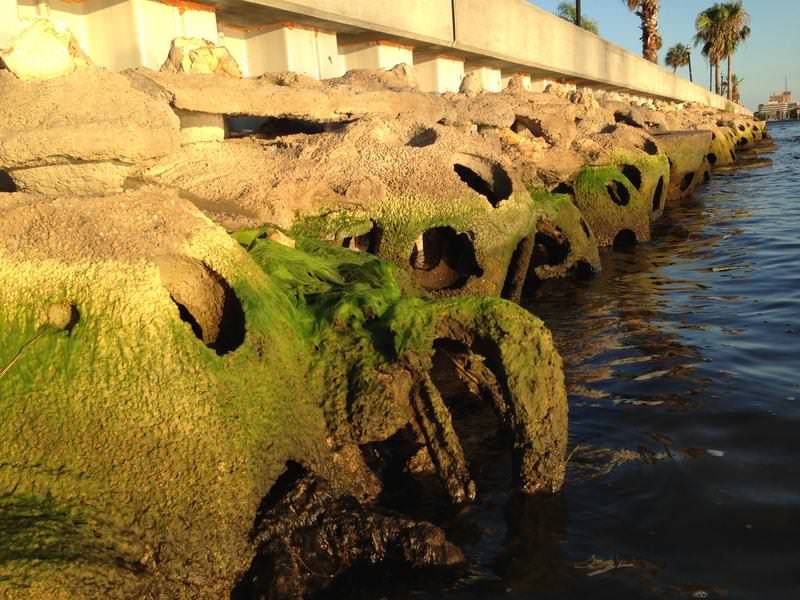City Of Sarasota Funds 'Living Seawall' To Improve Water Quality
Published on by Jake B in Academic
The city of Sarasota recently decided to fund a “living seawall” project along the coast of Sarasota Bay.

This is a similar past seawall project in the city of Palmetto. COURTESY OF WWW.REEFBALL.ORG
The city is using some of the settlement money it received from the 2010 BP Deepwater Horizon oil spill. The goal is to improve the Bay’s water quality.
City of Sarasota sustainability manager Stevie Freeman-Montes said the shoreline along Sarasota Bay is eroding.
"You can see it from aerials going back to the ‘90s... You can see how much land had been lost over time to the point where some palm trees were threatened and about to fall," she said. "It was definitely significantly eroded, especially with any storms that came. I think we were getting a little more nervous about city land being at risk."
So the city is putting in a 250-foot-long seawall along the edge of O’Leary’s Tiki Bar and Grill. But the city is also spending about $300,000 to attach an artificial structure that functions like a coral reef to the seawall.
Montes said she hopes the living seawall will attract filter feeders like scallops and oysters to improve water quality. Sarasota’s coast was recently plagued with a toxic red tide algal bloom. She said the long-term goal of this project is to understand what’s the best thing to do with seawalls when eroding shores need them.
"And if this is a good innovation and something we want to do more along those areas that have seawalls," she said.
For the next two years, Mote Marine Laboratory will study the city’s living seawall. And it plans to compare that data to other underwater areas in Sarasota Bay, like traditional seawalls, natural shorelines, and mangrove trees.
Read more: WGCU
Media
Taxonomy
- Job Function
- Organization Type
- Water
- Agriculture & Forestry
- Construction
- Government
- Green Technology
- Nanotechnology